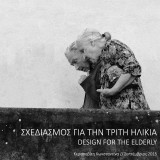The term "third age" usually reminds us old people with health problems who have difficulties taking care of themselves. They are often lonely, and, despite their free time, the opportunities for entertainment are scarce. Referring to old age, we usually use as a chronological adult separation limit, between old and very old, the age of 65 years. In this age begin to emerge physiological and biological changes in human organism. Care for the elderly is an economic and social problem and one of the major challenges the 21st century has to face. According to the National Statistical Service, from 1995 to 2006 the composition of the population by age groups has dramatically changed. In particular, there is a great increase in the proportion of older people mainly after 1995. The presence of more and more older people around us creates the need for care more urgent than any other time in the past.
Through this research, we made an attempt to understand these people and their way of life and also an approach to living models and elderly care facilities. Initially we will see their individual needs in order to understand them and the difficulties they face in their daily lives and how we can design a better and friendlier environment. Studying the statistical data relating to global aging and the percentage of older people in Europe, we may better understand the tremendous growth of older population, particularly in Greece. An analysis of environments that provide care for older people will help us to better understand the mode of their operation and how they can become more efficient. Finally we present proposals with which we can contribute in the configuration of an environment based on ergonomic design and has as main guidelines the person himself and his personal needs.
